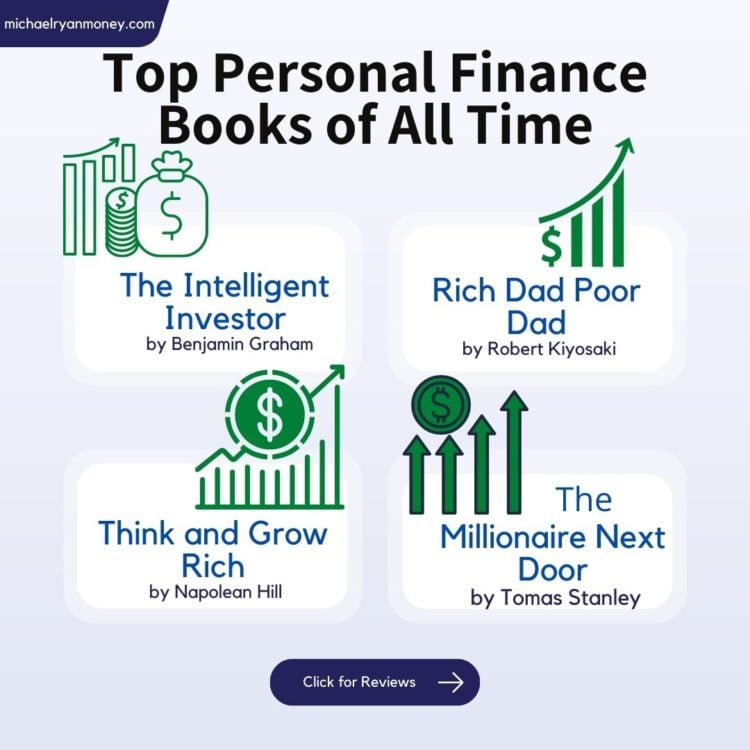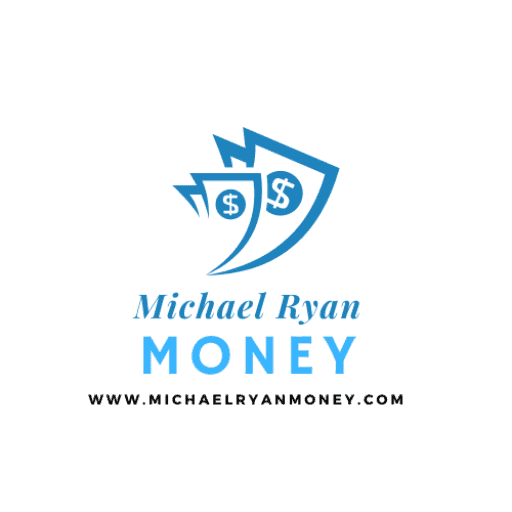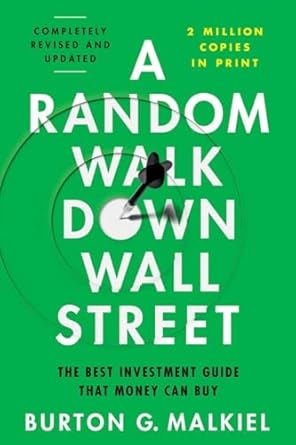
Alright, let’s cut through the noise. You’re searching for the best finance books, likely feeling drowned in options all screaming “financial freedom!” Maybe you’re staring down debt, feel paralyzed about investing, or just desperately want to feel in control of your money.
You’re not alone – Gallup’s recent polling consistently finds financial worries rank high for Americans, with many feeling their situation isn’t improving, a clear sign people are seeking real answers.
I’m Michael Ryan, an actual financial expert… For over 25 years, I’ve helped real people navigate these very real concerns. Forget fleeting crypto tips or complex derivatives. True, lasting financial progress almost always starts with mastering timeless principles.
While countless books promise the moon, a select few genuinely deliver foundational wisdom that can shift your behavior and build sustainable wealth.
This isn’t just another sprawling listicle. This is my curated “desert island” selection – the five books I’ve seen make the most tangible difference in my clients’ lives.
More importantly, I’m going to help you pinpoint which specific book you should grab first, based on your most pressing goal right now. Click the drop down menu below and see which of the best financial books of all time are the best match for YOU!
Which Finance Book Should You Read First?
Tell me your most pressing goal right now, and I'll suggest the best starting point from the essential list below.
This tool suggests a starting point. All these books offer valuable insights. Consider reading your primary recommendation first, then the secondary.
Don’t Read Randomly: Match Your Goal (A-E) to Your Essential First Finance Book
How do you avoid analysis paralysis and pick the right starting point?
By knowing your immediate mission.
Ask yourself honestly, which of these feels most urgent for you, right now?:
A) “Get Control”:
Are you just trying to stop living paycheck-to-paycheck, understand where your money goes, and build your first consistent saving habit?
(Focus here if budgeting feels like a myth or savings are zero).
B) “Grow Systematically”:
Are you past the basics with some savings built, and now ready to make that money work for you through smart, understandable, long-term investing?
(Focus here if ‘investing’ feels intimidating or like gambling).
C) “Understand My Brain”:
Do you know what you should be doing (saving more, investing consistently) but find yourself making emotional mistakes or self-sabotaging?
(Focus here if behavior, not knowledge, is your biggest hurdle).
D) “Build Efficient Systems”:
Are you looking for practical, modern ways to automate your finances, optimize accounts, and spend consciously with less daily effort?
(Focus here if you want actionable steps using today’s tools).
- E) “Align with Purpose”:
Are you thinking bigger picture – connecting your finances to a meaningful life, exploring financial independence (FI/FIRE), or ensuring your money supports your values?
(Focus here if ‘why’ matters as much as ‘how‘).
(If your goal doesn’t quite fit, stick around – these foundational books help almost everyone. But if debt reduction is priority #1, consider Dave Ramsey’s Total Money Makeover first, then come back here for the wealth-building phase).
Got your primary goal? Fantastic. Let’s find the book designed to tackle that challenge head-on.
Forget the Fluff: These 5 Finance Classics Offer Actionable Wisdom That Still Works in 2026
These five deliver the core principles I’ve seen create real breakthroughs.
Still Relevant? Why The Richest Man In Babylon (Clason) is Your First Step for Financial Control (Goal A)
Best For:
Absolute beginners needing simple, motivating rules. Anyone feeling completely overwhelmed by modern finance jargon.
The Core Idea (ELI5):
Through ancient parables, it teaches the unshakeable laws:
Save at least 10% of all you earn (pay yourself first), control your spending, make your savings grow safely, protect your principal, and invest in your ability to earn more.
Michael’s Insight (Why It Endures & Modern Relevance):
This book’s genius is its simplicity. I’ve seen elaborate financial plans fail spectacularly because these bedrock habits weren’t in place. Clason nails the psychology of discipline needed before fancy tools matter.
No, it won’t explain Roth IRAs, but it builds the crucial foundation. It’s the financial equivalent of learning to walk before you try to run a marathon. We translate these into a Modern Babylonian Action Plan in an upcoming article
MRM Action Plan, Your First Actionable Step:
Read it, then immediately set up an automatic 10% transfer from your checking to a separate savings account the day after your next paycheck. Seriously, do it now. Don’t overthink, just automate.
Learn More about The Richest Man In Babylon
-
Feeling lost financially? Master timeless, simple rules (like save 10% first).
-
Build the bedrock habits needed BEFORE fancy tools matter. Ancient wisdom still works!
-
Your absolute starting point if budgeting feels impossible or savings are zero (Goal A).
We may earn a commission if you make a purchase, at no additional cost to you.
Is Your Spending Worth Your Life? Your Money or Your Life (Robin) Changes Everything (Goal E)
Best For:
Those seeking meaning beyond just accumulating ‘more,’ questioning consumerism, or exploring the core ideas behind Financial Independence (FI/FIRE).
The Core Idea (ELI5):
It forces you to see money differently – not just as dollars, but as units of your precious, finite “life energy” (the time you trade for work). The key question becomes: Is this purchase truly worth the hours of my life it costs?
This reframes budgeting from deprivation to conscious alignment.
Michael’s Insight (Why It Endures & Modern Relevance):
This book can be genuinely life-altering – maybe transformative is the better word. I recommended it to a high-powered executive client, earning six figures but feeling utterly drained.
Six months after implementing its principles (especially tracking expenses in ‘life energy’), she’d intentionally downshifted her demanding career, slashed spending on things that didn’t truly bring joy, and reported feeling genuinely wealthier, more fulfilled, and saw her savings rate climb as spending became intentional.
It’s a potent cure for lifestyle inflation. Its concepts are foundational to the Financial Independence (FIRE) movement.
-
Stop trading precious life hours for stuff you don't truly value.
-
Redefine wealth: Align spending with joy & meaning, not just accumulation.
-
Essential if you're exploring FIRE or feel trapped by consumerism .
We may earn a commission if you make a purchase, at no additional cost to you.
Your First Actionable Step: Calculate your real hourly wage (including commute, work costs, etc., per the book). Then, track all spending for a month, converting each purchase into “life energy hours.” Prepare for some serious ‘aha!’ moments.
Stop Trying to Beat the Market: Why Malkiel’s A Random Walk Down Wall Street Simplifies Investing (Goal B)
Best For:
Beginner-to-intermediate investors ready to build wealth systematically via the stock market without excessive complexity or cost. Anyone confused by active vs. passive debates.
The Core Idea (ELI5):
Trying to consistently ‘beat the market’ (stock picking, timing) is incredibly hard, even for Wall Street pros. Markets are largely efficient. The smartest path for most is to simply own the entire market through low-cost, diversified index funds and hold patiently for the long term (passive investing).
Michael’s Insight (Why It Endures & Modern Relevance):
Malkiel’s evidence-based case for passive index investing is more crucial than ever. Data like the SPIVA® reports consistently show most active fund managers fail to beat simple index benchmarks over time, especially after fees.
This book saves investors from costly trend-chasing and high fees. It clearly explains foundational concepts like asset allocation and diversification.
While less dense than Benjamin Graham’s Intelligent Investor (Amazon link) which focuses on ‘value investing’ and finding ‘margin of safety’, Malkiel delivers the most practical investing wisdom for 95% of people starting out.
-
Confused by investing? Learn the proven power of low-cost index funds.
-
Stop trying to beat the market – own it simply and effectively for the long haul.
-
Your go-to for building wealth systematically via stocks without the hype
We may earn a commission if you make a purchase, at no additional cost to you.
Your First Actionable Step:
Open a brokerage account (if needed).
Set up a recurring investment (even $50/month!) into a broad-market, low-cost index fund (e.g., tracking the S&P 500 or Total Stock Market).
Consistency crushes complexity.
Learn More about A Random Walk Down Wall Street
No More Budgeting Guilt: How Sethi’s I Will Teach You To Be Rich Builds Modern Money Systems (Goal D)
Best For:
Young adults (20s/30s especially) wanting a direct, actionable system for automating finances, optimizing accounts (checking, savings, credit), and spending consciously without guilt.
The Core Idea (ELI5):
Stop agonizing over $6 lattes. Focus on nailing the “Big Wins”: Automate savings/investing (aiming for 10-20%+), negotiate salary raises, optimize credit cards for rewards/low interest, and create a “Conscious Spending Plan” that includes guilt-free money for fun.
- Best for: Those focused on optimizing systems, earning more, and spending consciously on what they value (not just extreme frugality).
- Core Focus:
6-week program on automating finances, optimizing credit cards, negotiating salary, investing simply, and defining your "Rich Life." Direct, humorous, action-oriented. - Planner Insight:
Sethi excels at shifting mindset from "deprivation" to "conscious spending" and automation. His advice on salary negotiation and automating savings/investments is gold for young professionals looking to build wealth efficiently. - Rating: ★★★★☆ (4.5/5)
We may earn a commission if you make a purchase, at no additional cost to you.
Michael’s Insight (Why It Endures & Modern Relevance):
Ramit provides the operational manual for applying timeless principles using today’s tech. His focus on automation is brilliant. It short-circuits procrastination and decision fatigue, major behavioral hurdles I see constantly.
His scripts for negotiating bank fees or asking for a raise are practical gold. It’s like The Richest Man In Babylon got a tech upgrade for the 21st century.
Your First Actionable Step:
Sketch out Ramit’s suggested automated money flow (Income -> Fixed Costs -> Investments -> Savings -> Guilt-Free Spending).
Then, implement just one piece of automation this week – maybe auto-paying your credit card in full or setting up that investment transfer.
Learn More about I Will Teach You To Be Rich – Book Review
Why Smart People Make Dumb Money Moves: Housel’s The Psychology of Money Explains It All (Goal C)
Best For:
Anyone who knows the “rules” but struggles with emotional decisions. Investors prone to panic-selling or chasing hot stocks. Honestly? Everyone.
The Core Idea (ELI5): Your financial success depends less on spreadsheets and more on psychology.
How you behave during market swings or when faced with temptation is shaped by your unique history, biases (like loss aversion or herd mentality), and relationship with risk – often in irrational ways. Understanding this human element is key.
Think managing money is about spreadsheets and stock picks? Morgan Housel's "Psychology of Money" shatters this myth with a profound truth
I've witnessed repeatedly in my practice: your relationship with money matters more than your knowledge of it.
This book explains why a kindergarten teacher might be better at building wealth than a Wall Street trader.
We may earn a commission if you make a purchase, at no additional cost to you.
Michael Ryan’s Financial Expert Insight (Why It Endures & Modern Relevance):
This relatively new book is already a classic and absolutely essential. Housel uses incredible stories – not dry theories – to illuminate why we make common money mistakes. As an advisor, so much of my work involves coaching clients through fear and greed during market volatility. This book gives you the mental toolkit to understand those powerful impulses.
It perfectly complements strategy books by addressing the crucial behavioral side of finance. Dive deeper into Common Investing Biases.
Contrarian Take: Many focus only on financial strategy; Housel proves that mastering financial psychology often yields better long-term results.
Your First Actionable Step:
Reflect on the last significant money decision you regretted.
Honestly identify the primary emotion driving it (Fear? Greed? Impatience? Envy?). Write it down.
That self-awareness alone is the first step toward better behavior.
Learn More about The Best Books About Money Mindset
Beyond the Essentials: Other Finance Greats (And When to Read Them)
Are there other phenomenal books? Absolutely! These often come next, once your foundation is solid. Each link below will take you Amazon.com
- The Intelligent Investor (Benjamin Graham): The dense, brilliant bible of value investing. Read it after Malkiel, once you want deep analytical tools.
- The Millionaire Next Door (Stanley & Danko): Eye-opening research on frugal wealth builders. Great for mindset, less how-to.
- Rich Dad Poor Dad (Robert Kiyosaki): Powerful for shifting mindset towards assets & entrepreneurship, but view specific tactics critically.
Why didn’t Atomic Habits (link to buy on Amazon) make the list? While fantastic for habit building generally, these five books apply habit principles directly to core financial challenges.
From Page to Paycheck: How to Turn Finance Books into Real Financial Progress
Okay, you’ve identified your first book. How do you make sure it actually changes things?
Engage Actively:
Don’t just highlight. Keep a notebook. Summarize chapters in your own words. What’s the one sentence that really resonated? What’s one specific action it inspires?
Implement ONE Thing Immediately:
Resist the urge to overhaul everything at once. Burnout is real. Pick the single most impactful “First Actionable Step” I listed for the book you chose and do it within 48 hours. Build momentum.
Discuss & Teach:
Seriously, talk about what you’re learning. Explain a concept to your spouse, a friend, or even just articulate it clearly in a journal. Teaching solidifies understanding.
Revisit Annually:
Your life, income, and goals change. Rereading these “desert island” books at different stages often reveals entirely new layers of wisdom applicable to your current reality.
The Single Best Finance Book for You is Waiting: Take Action Now
Choosing the right finance book isn’t about finding magic secrets; it’s about finding the right teacher for the lesson you need right now. By pinpointing your immediate goal, you can select a book that delivers targeted, actionable wisdom, transforming overwhelm into focused progress.
Your definitive next step: Pick the book from the core five that aligns with your primary goal (A-E). Get it this week (library, bookstore, online – just get it!).
Read the first chapter, AND commit to completing that single “First Actionable Step” outlined in its review.
That’s the crucial difference between being a passive reader and becoming an active architect of your financial future. That’s how knowledge compounds into real wealth.
Which book are you grabbing first? Or is there another timeless classic you swear by? Share your thoughts in the comments below – let’s build this knowledge base together!
P.S. Seriously, which book are you choosing first? Let me know!
- Sharing the article with your friends on social media – and like and follow us there as well.
- Sign up for the FREE personal finance newsletter, and never miss anything again.
- Take a look around the site for other articles that you may enjoy.
Note: The content provided in this article is for informational purposes only and should not be considered as financial or legal advice. Consult with a professional advisor or accountant for personalized guidance.





